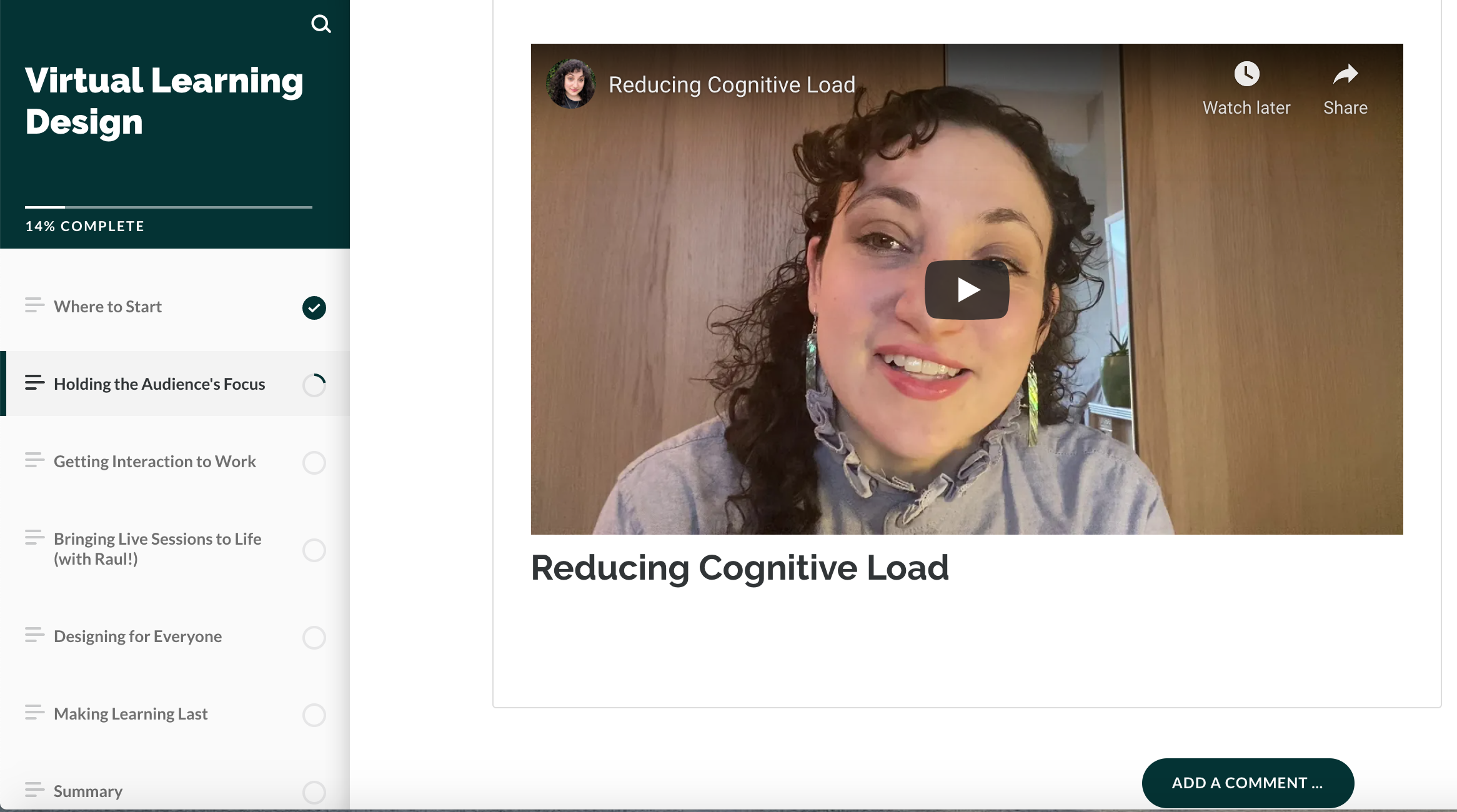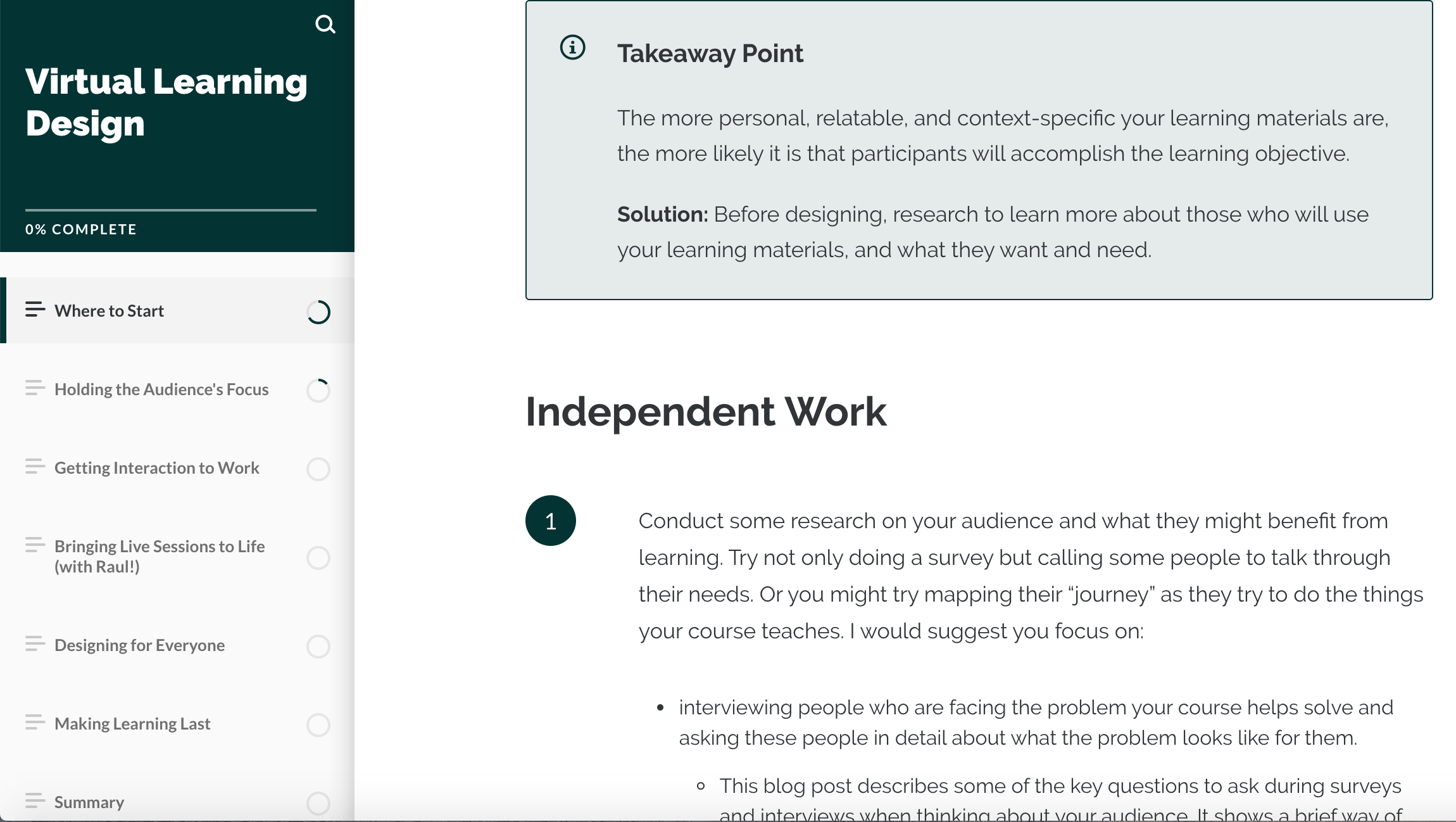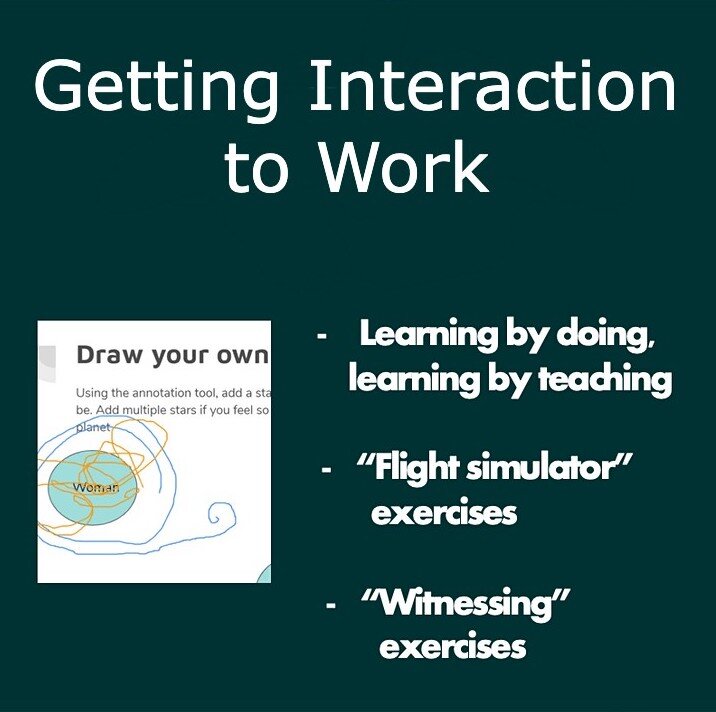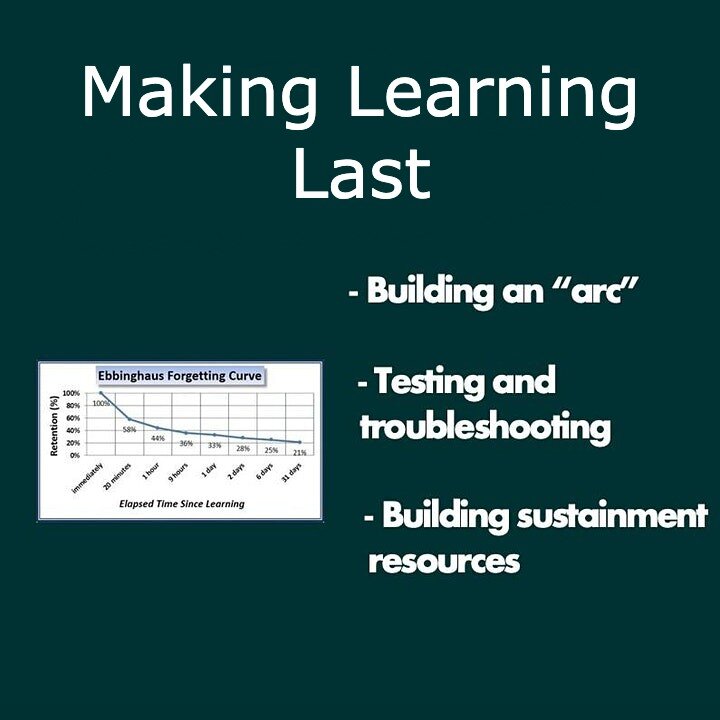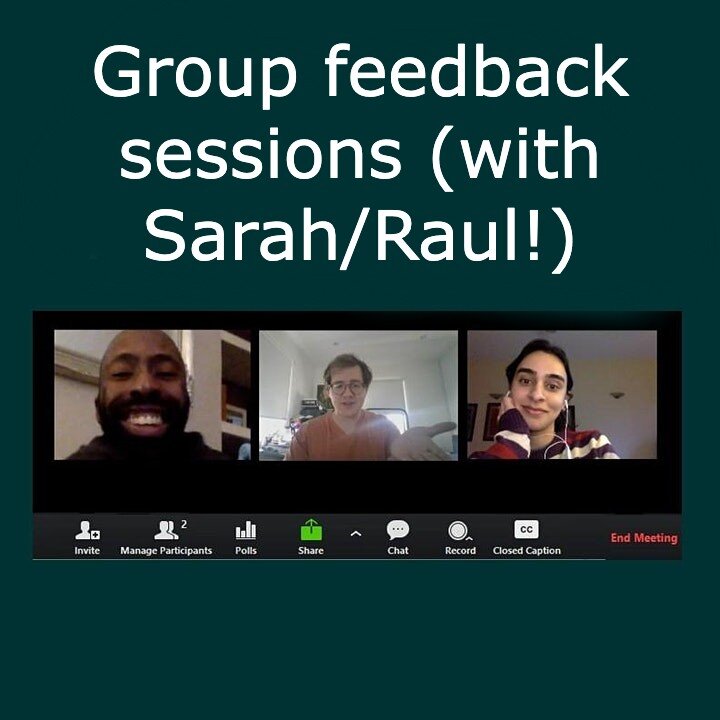
Design virtual learning
experiences
that actually work
Virtual teaching can be done well-but so often it isn’t. Learn this vital and increasingly important skill.
Open enrollment, asynchronous learning
Learn at your own pace at times convenient for you. A flexible, interactive course that includes 20+ short videos, as well as exercises, extra resources and optional 1-1 and group sessions.
Covers:
-how to build workshops grounded in the psychological research about how people actually learn
-how to keep the audience’s focus
-how to teach through a variety of tools and avoid Zoom gloom
-how to design effective interactive exercises
-how to build supporting resources that make learning “stick”
and much more, including peer support and individualised feedback
Example video:
More information about the course is below, where I detail the six sections, and here, where there are prices and a FAQ.You can also try a short demo of the course here and are very welcome to email me ahead of time with questions before you formally register .
"So much I would never have thought of and have not come across in other similar workshops."
“It pushed me to create and get out of my comfort zone with a group of brilliant individuals from around the world.”
"So excited to see how this course will benefit my understanding of my chosen field covered in my course and how to better reach people. I had been stuck in traditional pedagogy pitfalls, but learning about mapping out the audience's journey will be very helpful."
"Sarah set the scene for respectful engagement from the start and always offered a way for people to state their opinion. SO valuable in making sure people can participate- she really built a good emotional environment."
What You’ll Learn
Section 1: Where to Start
We will begin with a review of the basics of instructional design, starting from the simple question: what does it mean for someone to learn something? Because people rarely retain facts, we will practice designing learning objectives targeting the types of abilities, actions, or attitudes that we want those taking our workshop to acquire. We’ll work together to make these as specific (and in some cases, measurable) as possible. We’ll also learn how to research what those taking our course need before designing.
Section 2: Holding Their Focus
Next we will learn ways of keeping the audience’s focus in a virtual environment. We’ll look at the problem of cognitive load: how our minds cannot hold too much in our working memory at once. Managing students’ cognitive load well generally means that teaching should be done in small increments, with time in between for students to try to implement what they have learned and work it into their long-term memory. We’ll explore the way that visuals can help with managing cognitive load and working memory, and learn a technique for testing just how much of our own lectures are necessary or memorable. Finally, we’ll consider the focus-related (and other) benefits of a “flipped classroom” where the first “download” of information happens at the students’ own pace, outside of class, and synchronous learning time is used for coaching, exercises, peer interaction, and feedback.
Section 3: Getting Interaction to Work
This week we turn to the importance of exercises, which allow participants in workshops to take information presented to their short-term memory and embed it in their long-term memory and understanding via practice doing and teaching. We’ll look at exercises that help participants learn through doing, those that help them learn by teaching, those that help them work through a simulation of what it would be like to do an important activity, and exercises that help participants share vulnerabilities and recognise the need for learning in areas where they might otherwise experience psychological resistance.
Section 4: Bringing Live Sessions to Life (with Raul Aparici)
With the guidance of the highly-experienced Faculty Lead at The School of Life, Raul Aparici, we discuss how to ready oneself, the technology and participants for a smooth delivery. We’ll learn how to find the right presentation style for online delivery, how to alter one’s visual presentation to help participants use one’s online platform to the full, and what kinds of changes in the format and delivery of a workshop will be needed based on the number of participants.
Section 5: Designing for Everyone
Using the social model of disability, we consider how to use the strengths of the virtual format to make virtual learning accessible for everyone, so that those who have disabilities or are not neurotypical can learn, as well as those who are parents, who have fewer economic resources, or who are disadvantaged in other ways.
Section 6: Making Learning Last
We look at how to build an arc within a workshop to keep energy high and land key points. We’ll learn key aspects of shaping a workshop, from creating the right expectations to taking the “temperature” of the group early on to signposting clearly throughout. We discuss how to test and refine virtual workshops after each run, from what to look for during the test to how to shift timings of a course with care. We look at common issues with virtual workshops, how to spot them when they occur, and how to fix them.
Finally, we will look at the many ways to help participants in our learning programmes sustain their learning long after they leave our classroom, watch our videos, or complete our modules - from building networks for participants to offering follow up sessions to helping participants change their environment and day-to-day habits.
1-1 Sessions and Group Feedback Sessions
With Sarah or Raul!
You can schedule individual office hours and feedback sessions with Raul and Sarah, and you can book into group feedback sessions where you will share your work.
“I was looking to learn how to design and deliver online programmes and I frustrated that the training I had been giving wasn’t having enough of an impact. Sarah’s course is amazing. She’s helped my understand how to structure my content, how to engage my audience and how to deliver something with impact. Plus you come out of the course with content ready to go, this course is not an academic exercise. If you want to design and deliver content that makes an impact, sign up now, you won’t regret it!“
See more reviews of this course on the course's facebook page.
“This course was incredibly informative. Part introduction to learning theory and part design, I enjoyed this class tremendously and found the skills I gained invaluable to my career and in my workplace.”
“Sarah provided a wealth of information, and many tips that will be invaluable in making a course that is enjoyable and has impact on participants. Her own teaching a style is helpful in modelling many of the practices and skills she teaches and it is clear she is committed to her own and others’ continuing education and development. I was also pleased to see she included thought and training on inclusive and accessible teaching, which should help to make sure the courses made can be suitable for many people. Overall this course has challenged me and motivated me to think that I can make my material into a course.”

